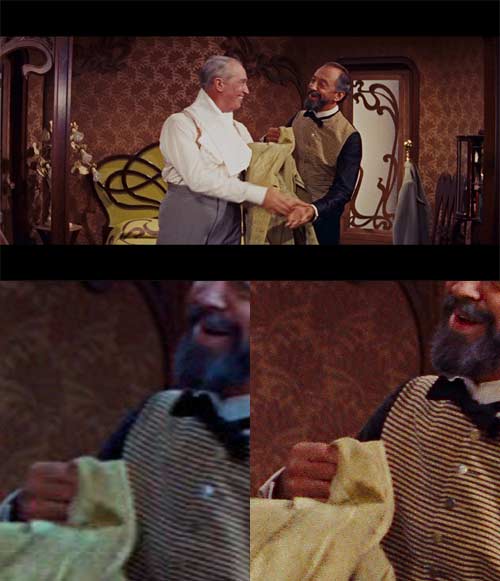 Picture:
Picture:  Sound:
Sound:  Extras:
Extras: 
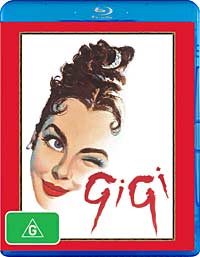
Movie:  Picture:
Picture:  Sound:
Sound:  Extras:
Extras: 
That subject matter should be equally controversial today. After all, the story is principally about Leslie Caron, seemingly intended to be playing a girl of about sixteen, being groomed by her female relatives to be a whore, and then being made available to a wealthy layabout under contract. The lack of both violence and sex from the screen do not make the rating authority's determination comprehensible.
The picture features rich colours -- especially reds -- and a very strong grain structure. Indeed, much of the time the image looks as though rendered by a post-Impressionist Pointillist. Except for scene changes, that is, where the fade from one to another is consistently preceded by a second or so of marked image softening.
The movie was originally released with three options for the sound: mono, four track stereo (which seemed to be four front channels rather than any surround, and 'Perspecta Stereo'. This last was also mono, but used a low frequency (30 to 40 hertz) tone on the sound track as a control to steer the mono sound between left and right. Sound effects would follow the steered voice. Judging from the orchestral spread, the four track stereo was used as the source for this 5.1 Dolby TrueHD mix. There is little surround.
The sound is clean and clear, but lacks any sense of true life, nor any significant bass, as you'd expect from movie sound from this period.
For extras, Warner Bros has provided a quite approximate contemporary package, and one rather nifty major extra. The package is something Warner Bros is making a habit of: a news reel or filler of the kind often broadcast with movies in those days, along with a cartoon ('The Vanishing Duck' from 1958 in this case). There's also a half hour 'making of' featurette, and a full length extra movie. This is the 1949 French version of Gigi (with subtitles in English). Scratchy, black and white, and presented in standard definition, this consumes only five gigabytes of the disc.
 (Australian rating); Region Free
(Australian rating); Region Free
The following video bitrate graph was generated by BDInfo 0.5.2:
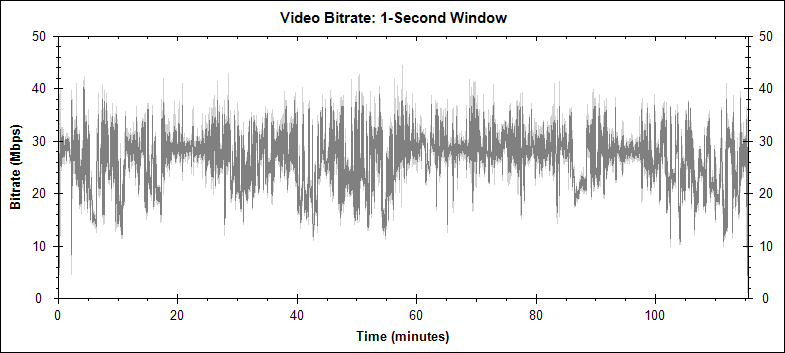
At the top of each is the full frame (suitably shrunk down) used in the comparison, with a 250 pixel wide detail from the frame underneath. The left side is from the PAL DVD. The image was captured digitally from the disc, scaled up from its native 720 by 576 resolution to 1,024 by 576 (to present in the correct aspect ratio), and then, in order to be comparable to the Blu-ray version, from that to 1,920 by 1,080. The detail is from that last scaled version, and has not been rescaled again. The right side is from the Australian Blu-ray. This has not been scaled at all.
The PAL version had clearly been taken from a version of the movie which had been cropped down over the years, losing significant portions of its edges, so the sizes of the objects within the details are different, with the Blu-ray encompassing more of the picture.
Different applications were used to capture the two frames, so I am not normally comfortable comparing the colour between the two, merely the detail and sharpness. For those visitors from NTSC lands, generally the PAL DVD is just a touch sharper than the NTSC DVD.
This little girl would be in her mid-50s by now. These opening scenes really brought to mind the artworks of Renoir and Seurat:
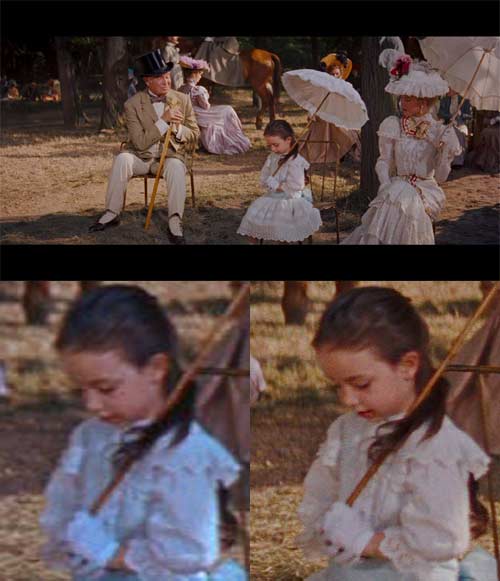
Lots of film grin here, and it's well worth it:
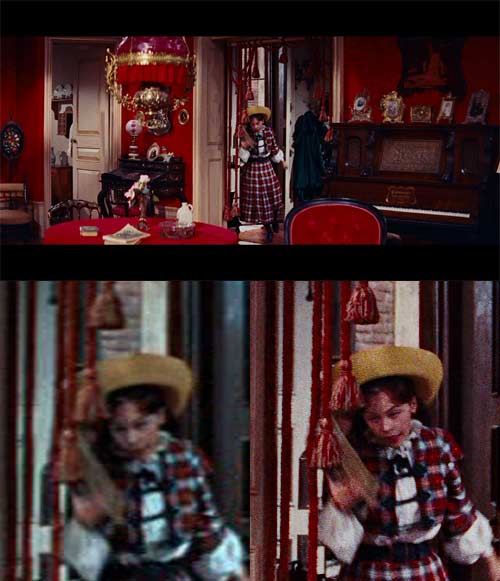
Uggh! The picture quality of the DVD really was sick:
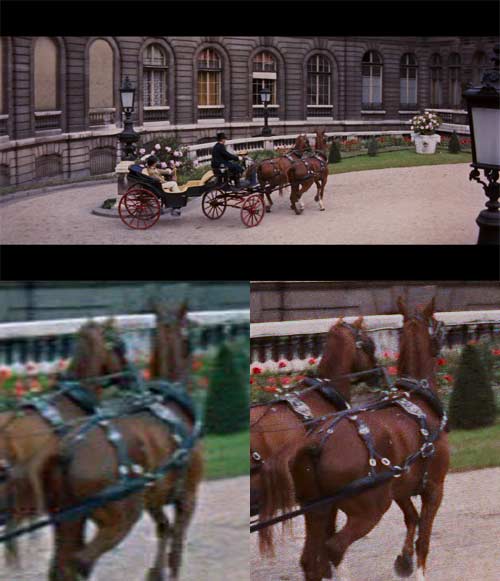
Detail, detail, detail:

Throughout this Blu-ray there is a sense that the whole thing has been rendered as though it were a pointillist painting. Intentional? Or the result of some film restoration? I don't know. In this scene it is particularly marked:

Most display devices or progressive scan DVVD players actually make the image seem much worse on this shot, because they tend to interpret the horizontal lines on the waistcoat as evidence of interlacing, and so apply video-mode deinterlacing, producing dreadful looking artefacts:
